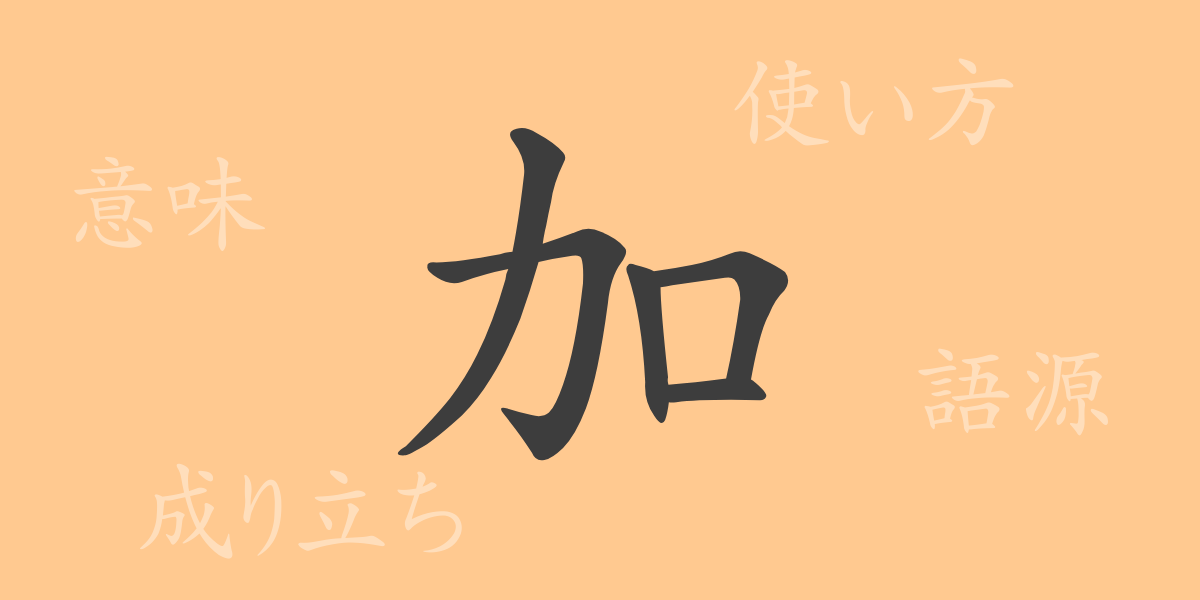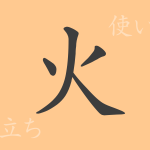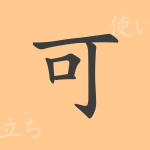“
Kanji in the Japanese language play a role beyond mere characters. They deepen the layers of meaning, add nuance to words, and bridge cultures. In this article, we will spotlight the common kanji “”加”” (Ka), which is frequently used in daily life, and explore its charm and usage. Let’s unravel the rich history of this single character and its role in the Japanese language.
The Origin (Etymology) of 加 (Ka)
The kanji “”加”” (Ka) has evolved from ancient Chinese pictographs. Originally, it was depicted as a pictograph representing the act of adding force, and later it was simplified into its current form. The basic meaning of “”adding something”” that this character possesses has remained unchanged over time and continues to hold the same meaning in Japanese.
The Meaning and Usage of 加 (Ka)
The kanji “”加”” (Ka) is used to mean “”to add,”” “”to increase,”” or “”to append.”” This kanji is employed when adding something, strengthening it, or supplementing it. It is also used in abstract concepts such as “”加速”” (Kasoku, acceleration) and “”加減”” (Kagen, adjustment), demonstrating its presence not only in physical meanings but in various scenes.
Reading, Stroke Count, and Radical of 加 ( Ka)
The kanji “”加”” (Ka) is known as basic knowledge in Japanese, but let’s reconfirm its details.
- Reading: The on’yomi reading is “”か”” (Ka), and the kun’yomi readings are “”くわ.える”” (Kuwa-eru) and “”くわ.わる”” (Kuwa-waru).
- Stroke Count: A total of 6 strokes
- Radical: 力 (Chikara)
Idioms, Phrases, and Proverbs Using 加 (Ka) and Their Meanings
The kanji “”加”” (Ka) is used in many idioms, phrases, and proverbs. For example, “”加害者”” (Kagaisha) means a person who has caused some kind of harm, “”加速”” (Kasoku) means to increase speed, and “”加減”” (Kagen) means to adjust the degree of something. These expressions illustrate the richness of the Japanese language.
Summary of 加 ( Ka)
The kanji “”加”” (Ka), with its simple yet powerful meaning, expands the range of expressions in Japanese. Knowing how this single character, used on a daily basis, contributes to language is a step towards a deeper understanding of Japanese. Through this exploration, we have learned about the various aspects of “”加”” (Ka) and its usage.
“

























